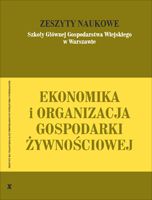Main Article Content
Article Details
AHONEN G.: Henkilöstötilinpäätös - Yrityksen ikkuna menestykselliseen tulevaisuuteen. Kauppakaari, Helsinki 1998.
ANDERSEN R. & McLEAN R.: Accounting for the Creation of Value. Ongoing research project sponsored by the Canadian Institute of Chartered Accountants, 2000.
ANDRIESSEN, D., TISSEN, R.: Weightless Wealth: Find Your Real Value in a Future of Intangibles Assets. Financial Times Prentice Hall, London 2000.
BAUM G., ITTNER CH., LARCKER D., LOW J., SIESFELD T., MALONE M.: Introducing the new Value Creation Index. Forbes 04.03.2000.
BONFOUR A.: The IC-dVAL approach. Journal of Intellectual Capital vol 4, 2003. (Crossref)
BONTIS N.: National Intellectual Capital Index: A United Nations initiative for the Arab region. Journal of Intellectual Capital, vol. 5, 2004. (Crossref)
BONTIS N.: There's a Price on Your Head: Managing Intellectual Capital Strategically. Business Quarterly, Summer, 1996.
BRATNICKI M., STRUŻYNA J.: Przedsiębiorczość i kapitał intelektualny. Wydawnictwo Akademii Ekonomicznej w Katowicach, Katowice 2001.
BROOKING A.: Corporate Memory. Strategies for Knowledge Memory. International Thomson Business Press, London 1999.
BROOKING A.: Intellectual Capital: Core Assets for the Third Millennium Enterprise. Thomson Business Press, London 1996.
EDVINSSON L., MALONE M.: Kapitał intelektualny. PWN, Warszawa 2001.
EDVINSSON L.: IC Rating. 2002, http://www.intellectualcapital.se/
FITZ-ENZ J.: Rentowność inwestycji w kapitał ludzki. Oficyna Ekonomiczna, Kraków 2001.
FLAMHOLTZ E.: Human Resource Accounting and Effective Organizational Control: Theory and Practice. Jossey Bass, 1985. San Francisco, 1985.
JOHANSSON U.: Human Resource Costing and Accounting. 1996, http://www.sveiby.com/portals/0/articles/OECDartUlfjoh.htm
JOHANSSON U. et al.: Human Resource Accounting versus the Balanced Scorecard, 1996, http://www.oecd.org/dataoecd/16/48/1948006.pdf
KAPLAN R.S., NORTON D.P.: The balanced scorecard measures that drive performance. Harvard Business Review, January-February, 1992.
LEV B.: Intangibles: Management, Measurement and Reporting. Brookings Institution Press, Washington 2001.
LEV B.: Seeing is Believing - A Better Approach To Estimating Knowledge Capital, in CFO magazine, April 2000
http://www.cfo.com/premium/index.cfm/l_centre/2992913?pi=/article.cfm/2992913
LUTHY D.H.: Intellectual capital and its measurement. 1998, http://www3.bus.osaka-cu.ac.jp/apira98/archives/htmls/25.htm
McPHERSON P., PIKE S.: Accounting, empirical measurement and intellectual capital. Journal of Intellectual Capital, vol. 2, No 3, 2001, http://www.emerald-library.com/ft (Crossref)
MERITUM GUIDELINES: Guidelines for managing and reporting on Intangibles, reports 2001, http://www.fek.su.se/home/bic/meritum/, http://europa.eu.int/comm/enterprise/services/business_services/documents/policy_papers/zambon.pdf
MOURITZEN J., BUKH P.N. et al.: Intellectual Capital Statements - The New Guideline, Ministry of Science and Education Denmark, 2003.
NASH H.: Accounting for the Future, a disciplined approach to Value-Added, Accounting, 1998, http://home.sprintmail.com/~humphreynash/indexback.htm
PERECHUDA K.: Metody zarządzania przedsiębiorstwem. Wydawnictwo Akademii Ekonomicznej we Wrocławiu, Wrocław 1998.
PULIC A.: Measuring the performance of intellectual potential in knowledge economy, 1998, www.vaic-on.net
PULIC A.: The physical and intellectual capital of Austrian banks, 1997, http://irc.mcmaster.ca
RAMBOLL GROUP, 1995, www.efqm.org
RODOV I., LELIAERT P.: FiMIAM - Financial method of intangible assets measurement. Journal of Intellectual Capital, vol. 3, 2002. (Crossref)
ROOS J., ROOS G., DRAGONETTI N.C., EDVINSSON L.: Intellectual Capital: Navigating in the New Business Landscape, Macmillan, Houndsmills, Basingtoke 1997. (Crossref)
SANDVIK E.: Topplinjen - Sanseapparatet som gj'r bedriften smartere, 2004 http://www. humankapitalgruppen.no
SCHIUMA G., MARR B.: Managing Knowledge in eBusinesses: The Knowledge Audit Cycle. Profit with People, Deloitte & Touche 2001.
SKRZYPEK E.: Wpływ zarządzania wiedzą na jakość. Problemy Jakości, nr 11, 1999.
STANDFIELD K.: Extending the Intellectual Capital Framework, 1998 www.knowcorp.com/article075.htm
STEWART T.: Intellectual capital. Biddles Ltd, Guildford and Kings Lynn 1998.
STEWART T.A.: Intellectual Capital: The New Wealth of Organizations. Doubleday/Currency, New York 1997.
SULLIVAN P.: Profiting from Intellectual Capital: Extracting Value from Innovation. Wiley, 2000. New York.
SULLIVAN P.: Value-driven Intellectual Capital. How to convert intangible corporate assets into market value. Wiley, 2000. New York.
SVEIBY K.E.: Methods for Measuring Intangible Assets, 2007, http://www.sveiby.com/articles/IntangibleMethods.htm
SVEIBY K.E.: The Invisible Balance Sheet, 1989, www.sveiby.com
SVEIBY K.E.: The New Organizational Wealth: Managing and Measuring Knowledge Based Assets. Berrett Koehler, San Francisco 1997,
http://www.sveiby.com/portals/0/articles/MeasureIntangibleAssets.html
Downloads
- Joanna Paliszkiewicz, Dzielenie się wiedzą oraz zaufanie w małych i średnich przedsiębiorstwach , Zeszyty Naukowe SGGW - Ekonomika i Organizacja Gospodarki Żywnościowej: Nr 62 (2007)
- Joanna Paliszkiewicz, Zaufanie a wyniki działalności przedsiębiorstw – przegląd literatury , Zeszyty Naukowe SGGW - Ekonomika i Organizacja Gospodarki Żywnościowej: Nr 82 (2010)
- Joanna Paliszkiewicz, Liczba szkół wyższych a rozwój województw , Zeszyty Naukowe SGGW - Ekonomika i Organizacja Gospodarki Żywnościowej: Nr 75 (2009)





